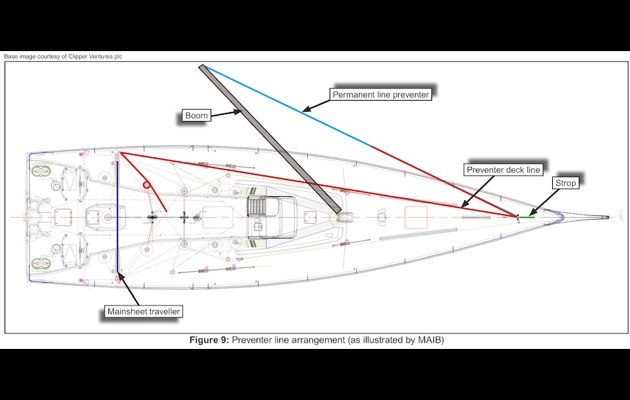The death of Andrew Ashman
Andrew Ashman, 49, a paramedic from Orpington, Kent, who had signed up for three legs of the Clipper 2015-16 Race, died from a fatal neck injury during a double accidental gybe.

Ashman was one of 21 fee-paying crew onboard CV21, IchorCoal, together with a professional skipper. He is described as an experienced sailor, who held an RYA Day Skipper course completion certificate and had completed the Clipper coxswain course. Ashman was a paramedic and HART responder and said to be an encouraging trainer. Clipper crews are split up into two watches called Port and Starboard – Ashman was the starboard watch leader.
The tragedy occurred on 4 September 2015, four days into the first stage of the race from London to Rio de Janeiro in the North Atlantic approximately 120 nautical miles west of Porto, Portugal.
A postmortem examination identified that Ashman had died as a result of a broken neck from contact with a solid object. ‘There was damage to his spinal cord and he had suffered a brain haemorrhage,’ read the MAIB report.
In the lead up to the accident the wind was logged as north-north-east at 20 knots, with a moderate sea state and low south-westerly swell. The yacht was on a broad reach on port tack following a southerly course at a speed over the ground (SOG) of approximately 11kts, sailing under the yankee, headsail and full mainsail.
During the 2200 watch handover ‘Ashman commented to the offgoing port watch leader that he had noticed the yacht had seemed a “bit lively” over the previous 30 minutes, on its downwind course of 160º,’ the MAIB report says. ‘The port watch leader disagreed and stated that there had been no problem running downwind during his watch.’
Under instruction from the skipper, the yacht was gybed onto a south-westerly course of 240° at 2219 to get them back towards their planned course. ‘The yacht was now on a broad starboard reach,’ the report continues, ‘with the apparent wind at an angle of approximately 130° on its starboard side. The yacht was heeled over onto its port side at an angle of approximately 10° and the starboard wheel was in use.
‘The mainsheet traveller was locked out to port and the preventer line was rigged. Following the gybe, the port watch went below deck and before he, too, went below, the skipper instructed Andrew to call him if he became concerned about anything.’

The helmsman was changed every 30 minutes, and at 2330, the helm was passed to one of the least experienced helmsmen, with Andrew Ashman monitoring him. ‘Andrew was standing aft of the traveller and to port of the helmsman, with his tether fixed to a D-ring to starboard of the navigation station hatch,’ the report states.



